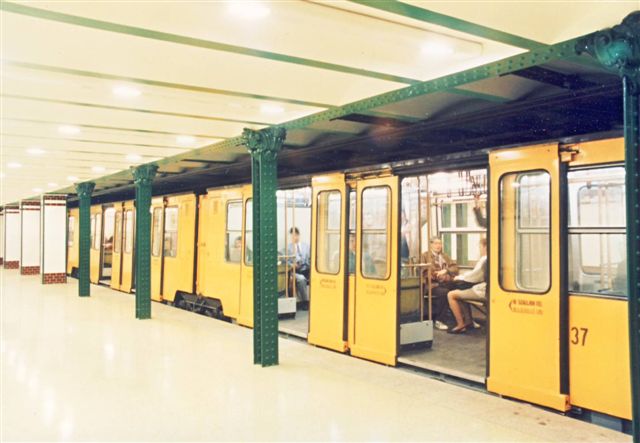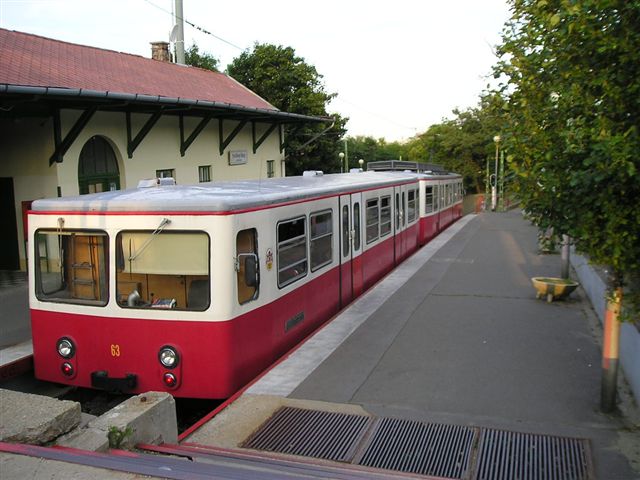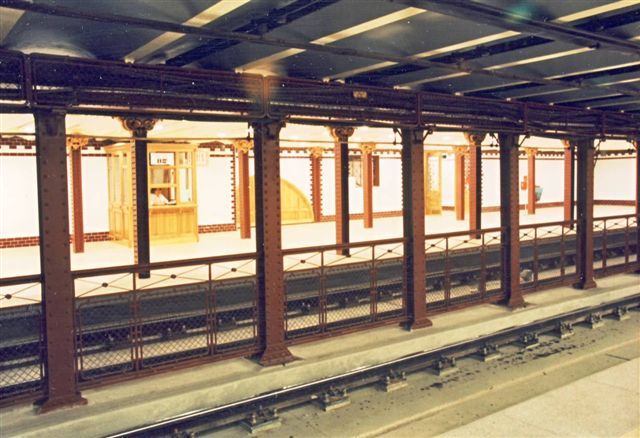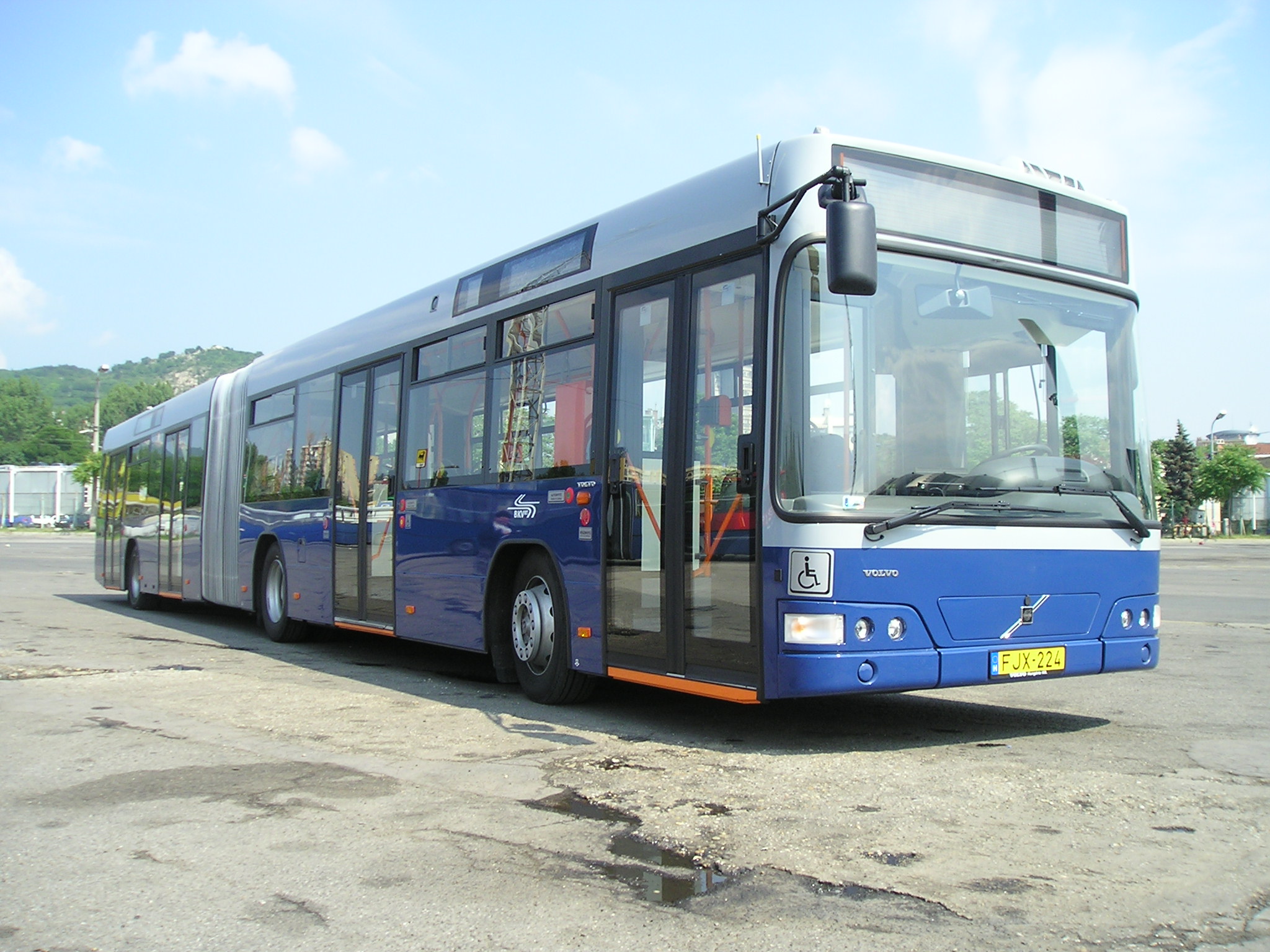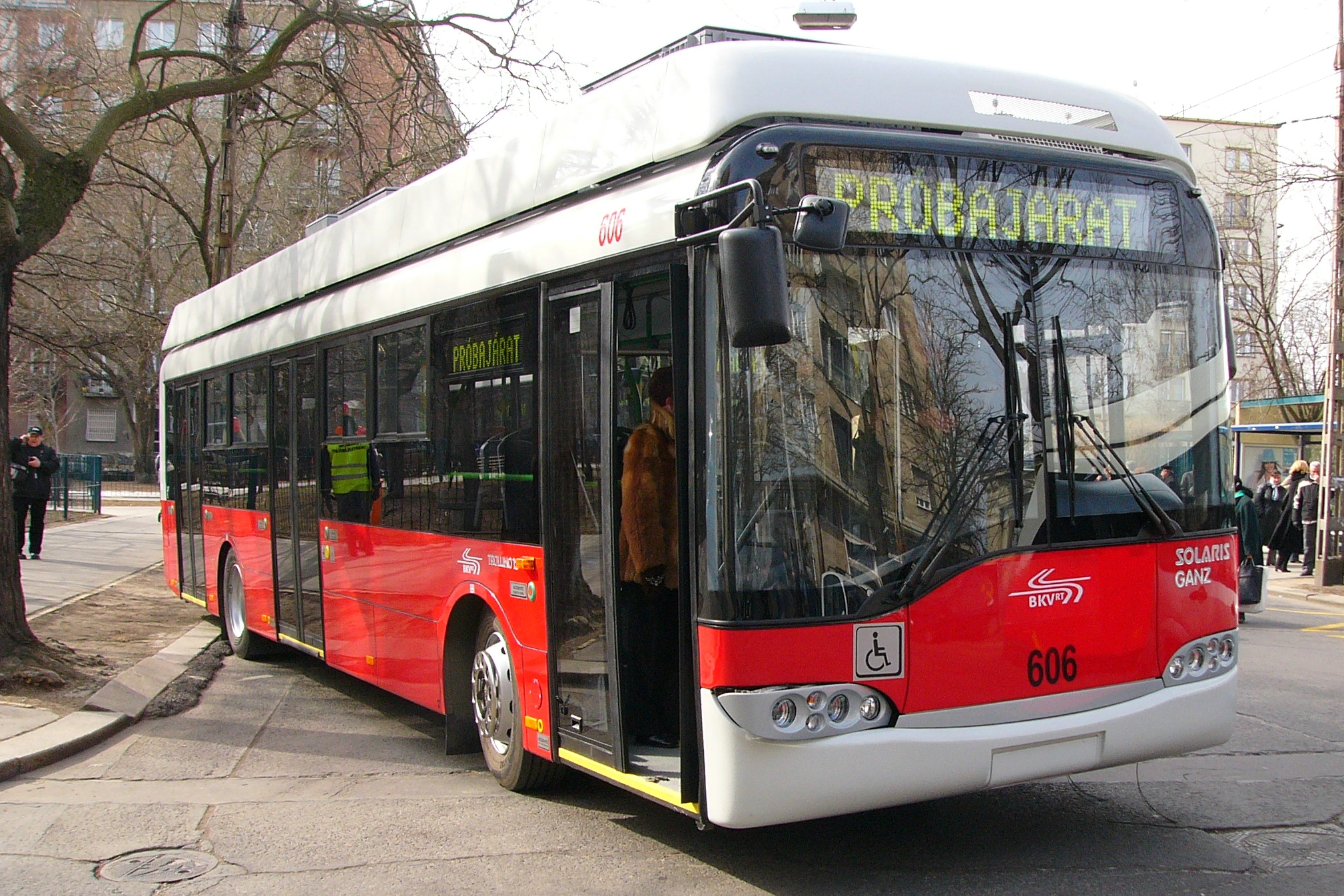
Early Development and Establishment of BKV, The Budapest Transport Company (1800-present days)
Development of community transport
Public transport has always played an essential role in the history of Budapest, because of the situation of this city. Even in ancient times, the place was considered as a traffic nodal point, because the terrestrial roads converged and crossed the River Danube here. Historical sources from a later date mention the Pest-Buda ferry, which gained even greater importance after the settlement of the Hungarian tribes. Again in later years, commercial traffic crossed the river via a boat-bridge, while the possibility of crossing by boat continued to survive until the 19th century, and started to decline only when steam-boating began to gain popularity and when permanent bridges were built to connect Pest and Buda (Chain Bridge: 1849; Margaret Bridge: 1876).
The omnibus, appearing first in the streets of Paris (1662), gradually conquered the metropolises of Europe, and it finally appeared in Pest in 1832, too. The launching of omnibus services is regarded as the start of community transport in Budapest. However – in just three decades – a dangerous competitor emerged: the horse tramway.

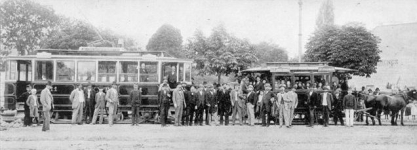
The horse drawn tramway appeared on the streets of Pest on 1st August 1866. The first horse tram tracks were constructed between Széna Square and the Újpest (New Pest) railway station. The Pest Public Road Rail Tracks Company (PKVT) founded on 22nd May 1865 applied for and was awarded a permit to construct the rail tracks. Only two horse tramway lines were built in Buda: one in Zugliget (1868) and one in Óbuda (1869), both built by the Buda Public Road Rail Tracks Company (BKVT). The horse tramway was the first transport vehicle – considered as a very modern one at that time – being able to satisfy mass transportation needs. With its fast and regular runs the horse tramway brought certain parts of the expanding city closer to one another, and thereby played an essential role in the development of the town in the years to follow.
After the inauguration of the Chain Bridge a new traffic node took shape, which gained even greater importance when the Tunnel was opened in 1855. The terminal stations for the horse tramways heading toward Zugliget (1868) and Óbuda (1869) were set up at the bridge-end. Thus, a new transport means to ensure connection to the Castle district had to be established close to an already significant traffic node.
The idea of building a funicular was raised by Ödön Széchenyi, the youngest son of Count István Széchenyi (the “greatest Hungarian”, Minister of Transport, the founder of modern Hungary through his ideas and his work. Several institutions bear his name today.) Ödön Széchenyi managed to obtain the approval of the Town of Buda, the Ministry of Interior and Transport and the “Imperial and Royal Army Commander-in-chief” of Buda. The building company signed the contract with the Army Treasury on 25th May 1868. Ödön Juraszek and Henrik Wohlfarth drew the designs. The funicular of the Buda Castle Hill started operating as the second transport vehicle of that type in the continent driven by steam at that time (the operator being the Buda Hill-track Company Limited by Shares) on 2nd March 1870. The cars being assembled in the Spiering Factory of Vienna had a special design: they contained three cabins built one above the other in a step-like arrangement. This technical solution was unique all over the world, and so became the greatest technical attraction of the funicular.
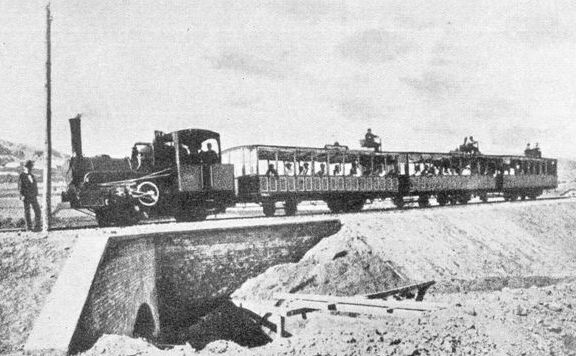 In 1870 Nikolaus Riggenbach the designer of Europe"s first cogwheel railway visited Budapest. His concept was to connect Sváb Hill, a district developing into a holiday resort in the 1850s, to the rest of the capital city of Hungary. The representative of the Basel-based company, the Internationale Gesellschaft für Bergbahnen applied for permission to construct a cogwheel railway to Sváb Hill in 1873. The agreement on this project was signed on 7th April 1873. The cogwheel railway departed for the first time in its history as the third such vehicle in Europe at 4 p.m. on 24th June 1874. Seeing the successful operation of this railway, the line was extended up to Széchenyi Hill in 1890.
In 1870 Nikolaus Riggenbach the designer of Europe"s first cogwheel railway visited Budapest. His concept was to connect Sváb Hill, a district developing into a holiday resort in the 1850s, to the rest of the capital city of Hungary. The representative of the Basel-based company, the Internationale Gesellschaft für Bergbahnen applied for permission to construct a cogwheel railway to Sváb Hill in 1873. The agreement on this project was signed on 7th April 1873. The cogwheel railway departed for the first time in its history as the third such vehicle in Europe at 4 p.m. on 24th June 1874. Seeing the successful operation of this railway, the line was extended up to Széchenyi Hill in 1890.
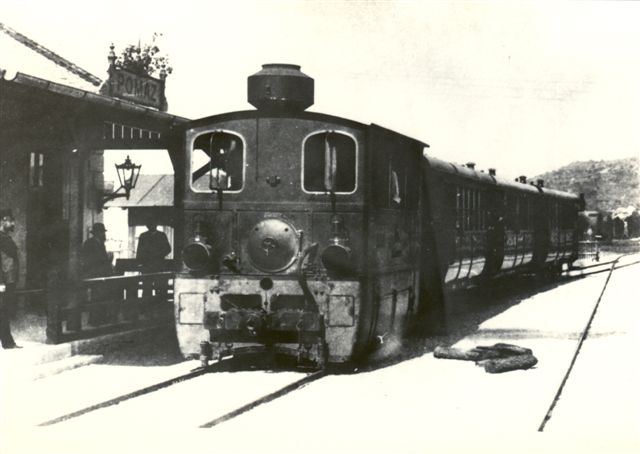 The demand to join the conurbation settlements into the city transport emerged by the development of the city. The first steam-driven HÉV suburban railway line ran from Közvágóhíd (Slaughterhouse) to Soroksár. When BKVT applied again for the preparatory work permit of its extension up to Dunaharaszti this section was not even introduced to operation. Both sections were opened to commercial traffic in 1887. In the following year two further lines were inaugurated: the Kerepesi Rd – Cinkota line and the Filatori Dam – Szentendre.
The demand to join the conurbation settlements into the city transport emerged by the development of the city. The first steam-driven HÉV suburban railway line ran from Közvágóhíd (Slaughterhouse) to Soroksár. When BKVT applied again for the preparatory work permit of its extension up to Dunaharaszti this section was not even introduced to operation. Both sections were opened to commercial traffic in 1887. In the following year two further lines were inaugurated: the Kerepesi Rd – Cinkota line and the Filatori Dam – Szentendre.
In this period of time both the horse tramway and the suburban railway lines were operated by the Budapest Public Road Rail Tracks Company. Thus, taking into consideration the two completely different ways of operation, the Ministry decided to separate these two transport divisions. Thus the Hungarian Industrial and Trading Bank – holding a majority of the shares in BKVT – established the “Budapest Suburban Railways Joint-Stock Company” (BHÉV) as a subsidiary of BKVT in 1889.
The Brick Factory of Szentlőrinc was planning to construct a suburban railway line to the capital city of Hungary. The Budapest-Szent-Lőrinc Suburban Railway Company Limited by Shares (BLVV) started commercial traffic in 1887. The activities of BLVV were characterised by a marked shift toward passenger transport from the 1890s.
Transports between Ráckeve and Dunaharaszti began in 1892. Then in 1899 the Budapest-Budafok Suburban Electric Railway Company Limited by Shares (BBVV) opened the Budapest-Budafok service.
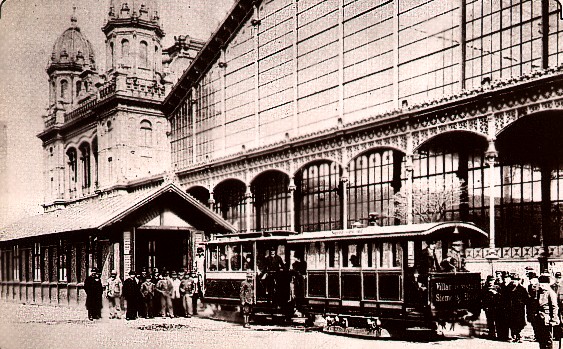 As a new achievement of technical advancement, the electrical railway (i.e. the tramway) emerged at the end of the 19th century. The thought of constructing an urban tramway line popped up as early as in 1883, but four years had to elapse until its full realisation. The first Budapest tramway departed from Nyugati (Western) Railway Station in 1887. The pilot-operation train consisting of two cars travelled on a single track of 1000 mm gauge, 1 km in length, up to Király Street. The first rail track of normal gauge (1435 mm), on the Egyetem Square – Stáció Street (today: Baross Street) – Köztemető Road (today: Orczy Square), was put into service in 1889. In 1888 the tramway line on the Great Boulevard (Nagykörút) founded by Siemens et Halske, Mór Balázs and Lindheim at Cie, was given the name of Budapest City Railway (BVV). In 1891 the English-Hungarian Bank bought the tramway network from the previous owners, together with the associated equipment, and founded a joint-stock company under the name of Budapest Electric City Railways. The first CEO of the company was Mór Balázs, the person tirelessly working on the establishment of the Budapest tramway system. The tramway soon became a major means of public transport in Budapest.
As a new achievement of technical advancement, the electrical railway (i.e. the tramway) emerged at the end of the 19th century. The thought of constructing an urban tramway line popped up as early as in 1883, but four years had to elapse until its full realisation. The first Budapest tramway departed from Nyugati (Western) Railway Station in 1887. The pilot-operation train consisting of two cars travelled on a single track of 1000 mm gauge, 1 km in length, up to Király Street. The first rail track of normal gauge (1435 mm), on the Egyetem Square – Stáció Street (today: Baross Street) – Köztemető Road (today: Orczy Square), was put into service in 1889. In 1888 the tramway line on the Great Boulevard (Nagykörút) founded by Siemens et Halske, Mór Balázs and Lindheim at Cie, was given the name of Budapest City Railway (BVV). In 1891 the English-Hungarian Bank bought the tramway network from the previous owners, together with the associated equipment, and founded a joint-stock company under the name of Budapest Electric City Railways. The first CEO of the company was Mór Balázs, the person tirelessly working on the establishment of the Budapest tramway system. The tramway soon became a major means of public transport in Budapest.
From 1896 onward, the passengers had a choice of not only BKVT and BVVV, but could also travel on the vehicles operated by the Budapest-Újpest-Rákospalota Electric Railway Company Limited by Shares (BURV). This latter company first opened the so-called “Megyer line”.
Following the electrification of the horse tram lines and then the BLVV-system also in 1900, and as BVV, BURV and BBVV had begun operating electric tram services right from the beginning, the tramway network of Budapest was actually completed by this time.
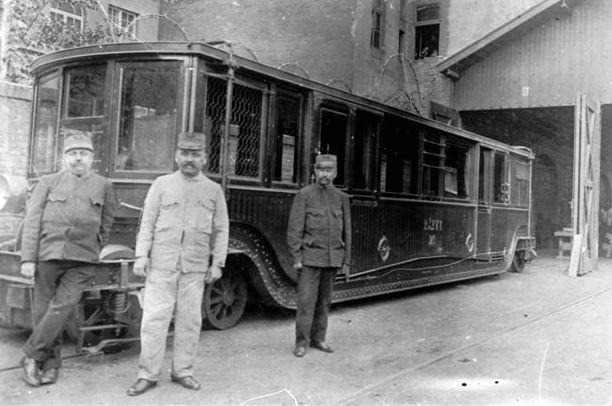 The great Avenue was opened on 20th August 1876, with the aim of emphasising that the capital of Hungary was a real metropolis. Even before the completion of the construction of this road, plans for building a horse tram line on it were submitted. But the city leaders decided to reject the idea of a tram line along Andrássy Avenue for good. The idea of an underground rail line originated from Mór Balázs. The designs were elaborated with the co-operation of Siemens and Halske. The construction of the underground railway took only 22 months. On 2nd May 1896 the first underground railway of the European mainland, driven by electric railcars was officially launched. Emperor Franz Joseph, who was staying Budapest at this time, on the occasion of the ceremonious opening of the “Millenary Exhibition”, visited the underground railway on 8th May 1896 and travelled from the terminal station at Gizella Square to the Zoo in car number 20, which was specifically designed for this occasion, and was called “royal carriage”. The monarch “most graciously” gave his consent to naming the railway after him. Thus the corporate name for the railway became Franz Joseph Underground Electric Railway Company Limited by Shares (FJFVV).
The great Avenue was opened on 20th August 1876, with the aim of emphasising that the capital of Hungary was a real metropolis. Even before the completion of the construction of this road, plans for building a horse tram line on it were submitted. But the city leaders decided to reject the idea of a tram line along Andrássy Avenue for good. The idea of an underground rail line originated from Mór Balázs. The designs were elaborated with the co-operation of Siemens and Halske. The construction of the underground railway took only 22 months. On 2nd May 1896 the first underground railway of the European mainland, driven by electric railcars was officially launched. Emperor Franz Joseph, who was staying Budapest at this time, on the occasion of the ceremonious opening of the “Millenary Exhibition”, visited the underground railway on 8th May 1896 and travelled from the terminal station at Gizella Square to the Zoo in car number 20, which was specifically designed for this occasion, and was called “royal carriage”. The monarch “most graciously” gave his consent to naming the railway after him. Thus the corporate name for the railway became Franz Joseph Underground Electric Railway Company Limited by Shares (FJFVV).
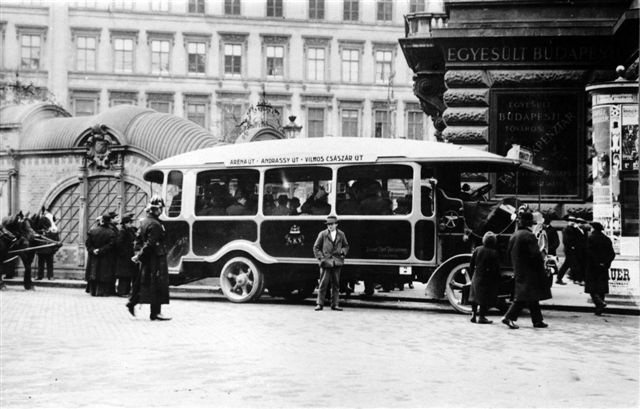 In Budapest the first bus service began its operation in 1915. The buses departed from the corner of Aréna (Dózsa György) Road and Nagy János (Benczúr) Street, ran along Andrássy Avenue and up to Vilmos császár (Bajcsy-Zsilinszky) Road.
In Budapest the first bus service began its operation in 1915. The buses departed from the corner of Aréna (Dózsa György) Road and Nagy János (Benczúr) Street, ran along Andrássy Avenue and up to Vilmos császár (Bajcsy-Zsilinszky) Road.
Under a government decree dated 22nd November 1918, all railways became public property. Furthermore, pursuant to the same decree the railway networks and other property of the joint-stock companies were to be managed by the city of Budapest under the name of Integrated City Railways of Budapest (BEVV).Under the Hungarian Soviet Republic of 1919 BEVV became public property (i.e. was nationalised).
In 1922 the Budapest Metropolitan Transport Company Limited by Shares (BSZKRT) was established. With this, the last obstacle to creating a unified public transport system in Budapest was removed. BSZKRT was the first and later became the most important municipal enterprise employing over 10 thousand people.
In 1933 István Hantos Jr., the engineer came forward with the idea of building a cable railway from Zugliget to János Hill. But 37 years had to pass until its realization. The Council of the 12th district operated the chair-lift for seven years and in 1977 they decided to hand its operation over to BKV.
BSZKRT, the company integrating all transport divisions, was finally dissolved in 1949. New transport enterprises were formed: the Metropolitan Electric Railway Municipal Company (FVKV), the Metropolitan Bus Municipal Company (FAKV), the Metropolitan Suburban Railway Municipal Company (FHVKV), the Metropolitan Electric Railway Main Workshop Municipal Company (FVFKV), the Metropolitan Bus Main Workshop Municipal Company (FAFKV) and the Metropolitan Railway Construction Municipal Company, and so the years of fragmented operation followed up until 1967.
Establishment of the Budapest Transport Company
BKV, the Budapest Transport Company was established in 1968. Its first General Director was József Daczó between 01.01.1968 - 32.12.1983.
Thanks to the reform of the fare-system the ticket regime became significantly simplified and the conditions for operation without conductors were laid down. The changes were introduced on all BKV vehicles in 1968, too.
The bus network of Budapest was essentially ready by this time and new routes were created only to satisfy the demand of the newly built housing estates.
Since 1968 BKV Has operated the river crossing and local boat services.
One of the most dynamic period of Budapest transport began in the early 1970s. In 1970-1972 Metro Line 2 was inaugurated. In January 1973 the operation of the metro was brought under BKV control.
From the 1970s organizing and developing the public transport for the conurbation area gained higher importance in transport policy concepts.
On the centenary of the unification of Óbuda, Buda and Pest, the capital became richer with several new or renovated facilities. The most important developments included the modernisation of the underground railway along Andrássy Avenue and the modernisation of the cogwheel railway to Svábhegy. The route of the underground railway as it is today was completed by the centenary. The old cogwheel railroad trains ran in 1973 for the last time.
The Funicular of the Buda Castle, which was severely damaged in World War II, was fully refurbished, electrified and delivered to the public on 4th June 1986.
In these years, between 01.01.1984 and 31.12.1990, Dr. József Zahumenszky was the General Director of BKV.
The construction of the Metro continued. As one of its key benefits, the metro network reached all the three highly frequented railway stations. At the junction of the three metro lines the Deák Ferenc tér transport node was put into shape.
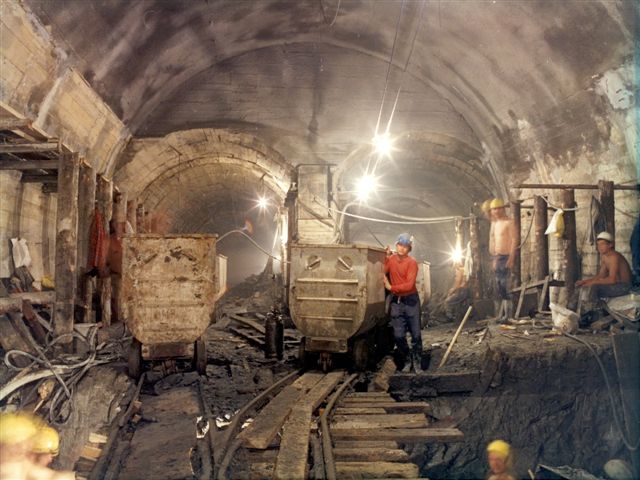
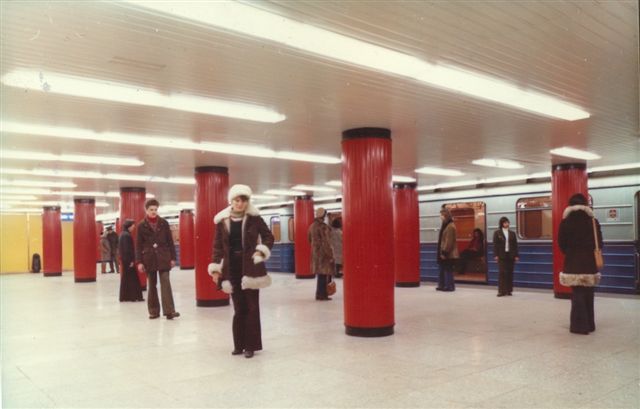
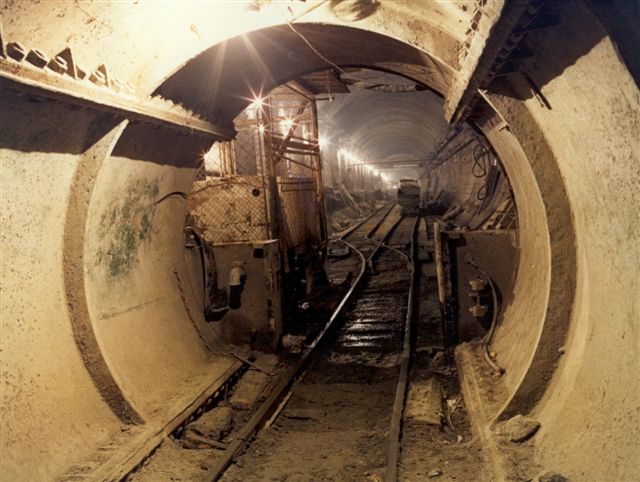
In 1991 all of BKV"s assets were transferred from state-property to the Municipality of Budapest. Between 01.01.1991 and 30.06.1993 Sándor Holl held the responsibility of the General Director of the company.
The General Assembly of the Municipality of Budapest transformed BKV into a real business entity, notably a shareholders’ company coming into effect on 1st January 1996. This way, BKV Rt. (BKV Company Limited by Shares) was created.
Between 01.07.1993 and 31.12.2006 the company was controlled by Botond Aba General Director.
The reconstruction of the Csepel suburban railway commenced in 1996 and was completed in 2000. Starting from 1998, many district and local services were launched (City-bus, Újhegy bus, Palota bus etc.). These connect today the major healthcare and public institutions of a given district.
BKV continued its vehicle modernisation and vehicle purchase projects. While doing so, it purchased vehicles being designed with a view to the principle of equal opportunities, and satisfying the needs of handicapped passengers, elderly people who move about with difficulty and mothers with small children. From 2001 four special buses help those with handicaps in their transport in Budapest. These vehicles run door-to-door (i.e. as requested by the passengers in advance).
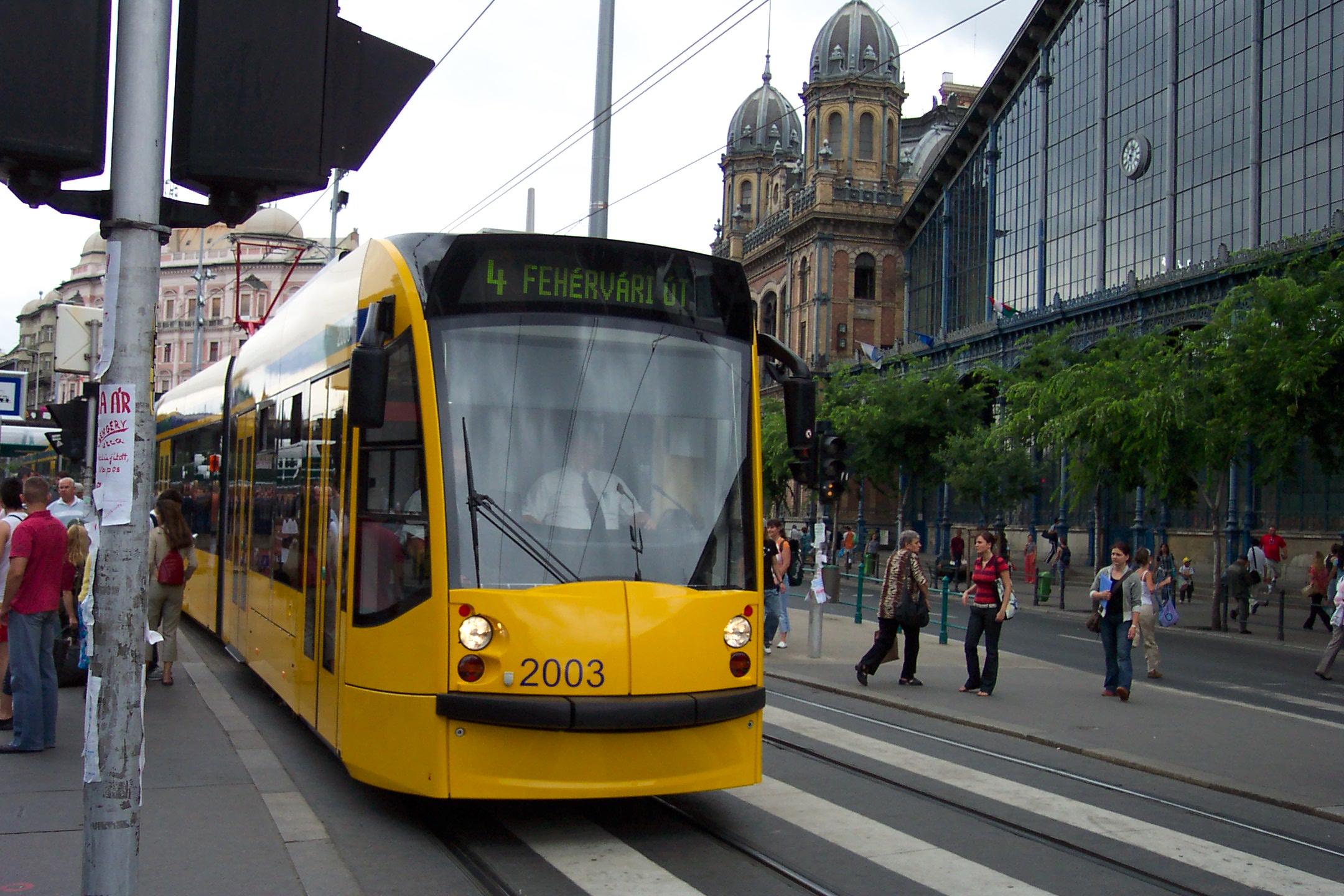
To improve passenger services, a Central Customer Service Office was opened in Akácfa Street in 2003. Those who are interested can receive information here about the services, the schedule, the ticket and pass prices and their use by appearing in person or by phone from highly qualified representatives.
Due to a change in legislation the name of the company changed as well on 6th February 2006. Now it is officially called Budapest Transport Privately Held Corporation, abbreviated as BKV Zrt.
From 01.01.2007 to 15.04.2008 Attila Antal was the CEO of the company, then between 19.02 2008 and 31.08.2008 the company was led by Zsolt Balogh, assigned CEO.
Dr István Kocsis has been the CEO of BKV Zrt. since 01.09.2008.
After the leaving of Dr. István Kocsis - as of 5 September 2011 temporarily - Dr. Gyula Várszegi, the chairman of the Board of Directors was in charge of the duties of the Chief Executive Officer, followed by Tibor Bolla from 14 February 2012.
Our company now operates 5 large divisions (bus, tram, metro, suburban and trolleybus) in an integrated system. In addition to these, it also operates the cogwheel railway, the funicular and the boat service, which are predominantly important for tourism.
BKV Zrt. preserves the relics of its own and its legal predecessors by its two museums and operating nostalgic vehicles.

